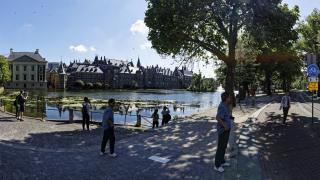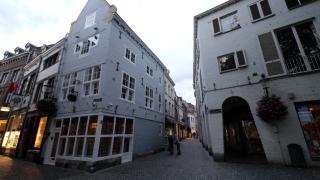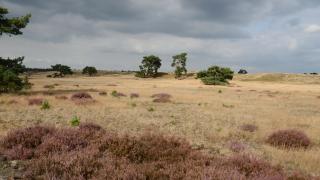Rail Network at a Glance
Nederlandse Spoorwegen (NS) operates most passenger trains in the Netherlands. NS manages over 400 stations nationwide.
Other regional operators include Arriva, Keolis, and Connexxion. These serve local routes, especially in the north, east, and south.
The Dutch rail network covers more than 3,200 km of track. The network is one of the densest in Europe. Major cities—Amsterdam, Rotterdam, Utrecht, and The Hague—are all connected by frequent Intercity services.
Trains run from early morning until after midnight. Intercity trains depart every 10-15 minutes on main routes. Sprinter trains provide local service, stopping at smaller towns.
Punctuality is high, with over 90% of trains on time.
Amsterdam Centraal, Rotterdam Centraal, and Utrecht Centraal are key travel hubs. These stations offer connections to domestic and international trains.
Standard second-class fares for short journeys (e.g., Amsterdam to Utrecht, 30 minutes) start at €9.40.
OV-chipkaart is used for ticketing across all operators.
Types of Trains and Services
Intercity (IC) trains connect major Dutch cities. They stop only at larger stations. Typical routes include Amsterdam–Rotterdam and Utrecht–Groningen. IC trains run up to 140 km/h. Most have free Wi-Fi, power sockets, and quiet zones. No seat reservations are required. Second class and first class are available. Trains run every 10–30 minutes on main routes.
Sprinter trains serve local routes. They stop at all stations, including small towns and suburbs. Sprinters are slower, with frequent stops. They are used for short commutes, especially around Randstad cities. Sprinters have basic seating and less luggage space. No toilets on some older models.
Intercity Direct is a high-speed service between Amsterdam, Schiphol, Rotterdam, and Breda. It uses the HSL-Zuid line. Trains reach 160 km/h. A supplement fee of €2.90 applies between Schiphol and Rotterdam. Travel time Amsterdam–Rotterdam is 40 minutes.
International trains include ICE (to Germany), Thalys (to Belgium/France), and Eurostar (to London). These require advance booking and seat reservations. Night trains (Nightjet) run to Austria, Switzerland, and Germany. International trains offer onboard catering and first-class options.
Ticketing Made Simple
Train tickets in the Netherlands are sold at stations, online, and via mobile apps.
- Automated ticket machines are available at all NS stations. Machines support Dutch and English. Most accept debit cards and coins. Some accept credit cards.
- Tickets can be purchased at staffed counters in larger stations like Amsterdam Centraal and Rotterdam Centraal. Service fees apply at counters (usually €1 extra).
- The NS website (ns.nl) and NS app allow for digital ticket purchases. E-tickets are scanned from your phone.
- The OV-chipkaart is a reusable smart card. It is valid on all Dutch trains and most public transport. Purchase and top up at stations or supermarkets. A personal OV-chipkaart costs €7.50 and is valid for five years.
- Ticket types include:
- Single (enkele reis): One-way, valid for a specific route
- Return (retour): Outbound and return on the same day
- Day pass (dagkaart): Unlimited travel for one day, from €46
- Rail passes: NS Flex subscriptions, Holland Travel Ticket (€70 for unlimited travel in one day)
- Children under 4 travel free. Ages 4-11 use the Railrunner ticket (€2.50 per day).
- Groups of 2-7 can use the NS Group Ticket (from €7.15 per person, off-peak only).
- Off-peak discounts apply after 9:00 and on weekends with NS Flex or discount cards.
- Always check in and out with your OV-chipkaart at station gates. Paper and e-tickets must be scanned at gates. Fines for not checking in/out start at €50. Dutch trains do not use ticket zones; fares are based on distance.
Major Dutch stations like Amsterdam Centraal, Rotterdam Centraal, and Utrecht Centraal have clear layouts. All have digital departure boards in Dutch and English. Printed timetables are posted near platforms. Platforms are numbered; check your ticket or the digital board for your train's platform.
- NS stations have yellow digital boards showing real-time departure times, train type, and platform.
- Transfers are common at Utrecht Centraal and Amersfoort. Minimum transfer time is usually 5 minutes.
- Listen for platform change announcements in Dutch and English. They are frequent during peak hours (07:00-09:00, 16:00-18:00).
- Lifts, escalators, and tactile paving are standard for accessibility. All major stations have step-free access.
- Luggage lockers (kluisjes) are available at most stations. Prices start at €4 for 24 hours (small locker).
- Peak travel times mean crowded trains, especially between Amsterdam, Rotterdam, and Utrecht. Allow extra time for transfers.
- Bicycle storage is available at most stations. Paid guarded bike parking (fietsenstalling) is common.
- NS Reisplanner app provides live updates on delays and platform changes.
Always check the digital board before boarding. Platforms may change at short notice.
Bikes, Luggage, and Onboard Tips
Bicycles:
- Standard bikes allowed on NS trains outside peak hours (6:30–9:00, 16:00–18:30 excluded).
- Bicycle day ticket (Fietskaart Dal) costs €7.50. Buy at stations or NS app.
- Foldable bikes travel free anytime if folded.
- Dedicated bike spaces marked on train doors.
Luggage:
- No checked luggage service. Carry-on only.
- Store bags in overhead racks or at carriage ends.
- Large suitcases may block aisles if not stored properly.
Traveling with children:
- Children under 4 travel free. Ages 4–11 need a Railrunner ticket (€2.50 per day).
- Family compartments available on some Intercity trains.
Onboard facilities:
- Toilets available on all Intercity and Sprinter trains.
- Free Wi-Fi on most Intercity trains; limited on Sprinters.
- Quiet zones (stiltegebieden) marked in some carriages—no phone calls or loud conversation.
Etiquette:
- Keep feet off seats. Use headphones. Give priority seats to elderly and disabled.
Smart Strategies for Smooth Journeys
Plan routes with NS Reisplanner or 9292 app. Both show live Dutch train schedules and platform changes.
Check for delays on NS.nl or the NS app. Disruptions are common during maintenance, especially on weekends.
Book Intercity Direct or Thalys tickets in advance for lower fares. Early booking can save up to 40%.
Use off-peak hours (daluren) for cheaper tickets. Avoid morning (6:30–9:00) and evening (16:00–18:30) rush.
Look for special offers like 'NS Spoordeelwinkel' day tickets. These deals combine train and attractions.
For real-time updates:
- NS app (Dutch/English)
- 9292 app (multi-modal)
- Digital boards at every station
Quick checklist for first-time users:
- Download NS app
- Check platform before boarding
- Validate ticket or OV-chipkaart
- Watch for yellow NS staff vests for help
- Keep an eye on luggage
Most Dutch trains run every 10–30 minutes. Connections are usually short, but always check transfer times.












